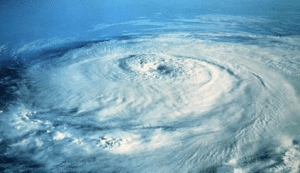 In one of my recent Mental Management of Emergencies classes a participant was describing an incident that resulted in several first responder casualties. As he shared the details, he described the unfolding of events as “The Perfect Storm.” This article will discuss the origins of that phrase and share why we should consider changing our view of responder casualty events from “The Perfect Storm” to “The Predictable Storm.”
In one of my recent Mental Management of Emergencies classes a participant was describing an incident that resulted in several first responder casualties. As he shared the details, he described the unfolding of events as “The Perfect Storm.” This article will discuss the origins of that phrase and share why we should consider changing our view of responder casualty events from “The Perfect Storm” to “The Predictable Storm.”
The Perfect Storm
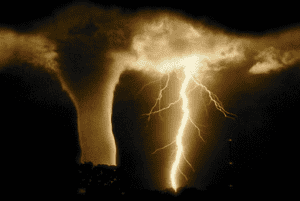 The phrase is used to describe a combination of unpredictable circumstances that cause drastic outcomes. The term is also used to describe circumstances that occur so infrequently that they are thought to be unpredictable and thus, perhaps, unpreventable. The term can also sometimes be used to describe the worst case scenario of a potential, not yet experienced, event.
The phrase is used to describe a combination of unpredictable circumstances that cause drastic outcomes. The term is also used to describe circumstances that occur so infrequently that they are thought to be unpredictable and thus, perhaps, unpreventable. The term can also sometimes be used to describe the worst case scenario of a potential, not yet experienced, event.
The Predictable Storm
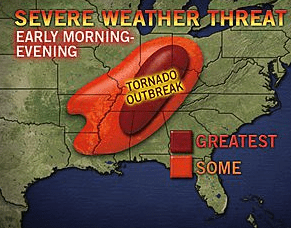 This is not a term you’ll hear used by first responders when describing tragic outcomes. We don’t want to think of our tragedies as predictable. Because if they were predictable then perhaps they could have been prevented. That concept may be too sobering for a responder to accept in the throws of a casualty event. Nonetheless, it needs to be discussed. The predictable storm is one where there are ample clues and cues that bad things are on the horizon. The threat may not only be significant, but it is also very predictable.
This is not a term you’ll hear used by first responders when describing tragic outcomes. We don’t want to think of our tragedies as predictable. Because if they were predictable then perhaps they could have been prevented. That concept may be too sobering for a responder to accept in the throws of a casualty event. Nonetheless, it needs to be discussed. The predictable storm is one where there are ample clues and cues that bad things are on the horizon. The threat may not only be significant, but it is also very predictable.
The Forecast: A Storm is Brewing
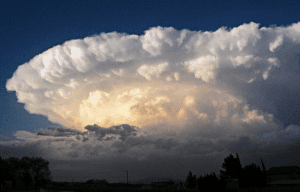 Forecasters are often able to predict severe storm systems based on the storm’s historic performance, current conditions and projected trajectory. To forecast is to predict. Some storm systems are easy to predict because they are “typical” and have all the signs and symptoms of a storm (what I’ll term clues and cues).
Forecasters are often able to predict severe storm systems based on the storm’s historic performance, current conditions and projected trajectory. To forecast is to predict. Some storm systems are easy to predict because they are “typical” and have all the signs and symptoms of a storm (what I’ll term clues and cues).
Other storm systems are less predictable and seem to form out of no where and have very few clues and cues. One moment the skies seem non-threatening. The next moment a severe storm is gripping a region. The forecasters are caught unexacting and off-guard.
Forecasters predict severe weather based on clues and cues and probabilities and sometimes they’re wrong. When this happens, people can become angry and frustrated. If that’s all that happened, it might be ok, but it’s not. People can also become desensitized to the forecaster’s predication and ignore the warning signs that the conditions are ripe for a severe weather event. Thus, people find themselves caught in severe weather conditions even though they had been warned. Since the forecaster had been wrong in the past, the assumption is the forecaster will be wrong again.
The First Responder Casualty Perfect Storm
For a first responder casualty to be appropriately termed a ‘Perfect Storm’ the conditions would have to be rare, unexpected and unpredictable. Unfortunately, as I have evaluated many hundreds of casualty reports, only one of the three conditions have been met – unexpected. My evaluations of casualties have revealed many, many of them are neither rare nor unpredictable.
A Rare Find
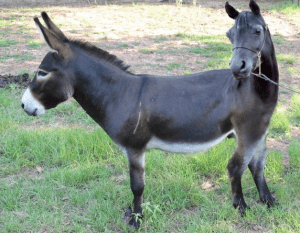 Rare: Uncommon; Atypical; Unusual; Occurring far apart in time. These are some of the descriptions I find in my search to understand the term. However, these are not what I find in my evaluation of casualty incidents. Many of the contributing factors to the casualties are anything by rare. Rather, the circumstances contributing to the casualty were common, typical, reflected the organization’s usual methods of operating, and occurred with great frequency. In fact, many of the factors contributing to the casualty had become a standard practice.
Rare: Uncommon; Atypical; Unusual; Occurring far apart in time. These are some of the descriptions I find in my search to understand the term. However, these are not what I find in my evaluation of casualty incidents. Many of the contributing factors to the casualties are anything by rare. Rather, the circumstances contributing to the casualty were common, typical, reflected the organization’s usual methods of operating, and occurred with great frequency. In fact, many of the factors contributing to the casualty had become a standard practice.
The Crystal Ball
 Fortune tellers use crystal balls to (allegedly) make predictions of the future. As they look into the ball they see things – clues and cues – that allow them to foretell future events. They usually do this after gathering information about their customer’s past. Information about the past is then used to predict the future. A good fortune teller is able to gather a few pieces of important information and infer things about the future.
Fortune tellers use crystal balls to (allegedly) make predictions of the future. As they look into the ball they see things – clues and cues – that allow them to foretell future events. They usually do this after gathering information about their customer’s past. Information about the past is then used to predict the future. A good fortune teller is able to gather a few pieces of important information and infer things about the future.
While I am no fortune teller, I can predict with uncanny accuracy, many of the contributing factors that are going to be contained within the casualty investigation reports when responders die while performing high-risk, high consequence activities. How can I do this? I deploy two strategies that can help me do this. First is inference and the second is observation.
Inference
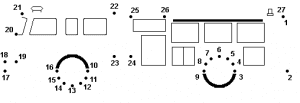 As responders are getting killed in high-risk, high consequence situations, the investigations are revealing a sobering fact. Many of the contributing factors are the same as previously occurring events. In fact, this frustrating observation has caused me to state during my programs (with frustration): We are not finding any new ways to kill first responders. Rather, we are taking all the ways we already know how to do it and perfecting them by doing them again and again and again.
As responders are getting killed in high-risk, high consequence situations, the investigations are revealing a sobering fact. Many of the contributing factors are the same as previously occurring events. In fact, this frustrating observation has caused me to state during my programs (with frustration): We are not finding any new ways to kill first responders. Rather, we are taking all the ways we already know how to do it and perfecting them by doing them again and again and again.
I have found this to be among my greatest frustration. It’s like we’re not learning anything from other incidents where responders die. This is shameful. We owe it to our fallen to learn from their sacrifice. We also owe it to our members to prevent the same things to happen again.
It can be inferred that if a series of circumstances combine and cause a responder to get killed, those series of circumstances could be combined again and the results will be the same. And again, and again, and again. And this is exactly what I’m seeing. Unfortunately, many responders have not taken the time or exerted the effort to read the many hundreds of casualty reports that lead me to this conclusion. No worries. I’ve done it for you! But if you want to change the outcome for your responders, you must heed my recommendations. This is the premise of my “Firefighter Safety: Mistakes and Best Practices” program. It has become one of my most popular short (2-4 hours) program. I share the common factors and provide solutions (none of which cost money!).
Observation
 The second thing I am able to offer organizations is observation. Do I have some kind of x-ray vision that allows me to see things you cannot? Well, yes. Sort of. If your organization is doing things that may contribute to a casualty event but you’re unaware that your storm is brewing, you’ll be none the wiser until you have your bad outcome. The gift that I have is the ability to look at the way a department does things, cross reference it to the research I have done on how casualties occur, and see what you are unable to see.
The second thing I am able to offer organizations is observation. Do I have some kind of x-ray vision that allows me to see things you cannot? Well, yes. Sort of. If your organization is doing things that may contribute to a casualty event but you’re unaware that your storm is brewing, you’ll be none the wiser until you have your bad outcome. The gift that I have is the ability to look at the way a department does things, cross reference it to the research I have done on how casualties occur, and see what you are unable to see.
Is it possible for an organization to be so close to their problems that they cannot see them? Absolutely! And when these organizations have bad outcomes they excuse the occurrence away as a ‘Perfect Storm” – a combination of unpredictable circumstances that resulted in a dramatic outcome.
Unfortunately, just like citizens do not want to heed the warnings of the weather forecaster because they may not be right, I do suffer the same admonishment. As I share the potential contributing factors to casualty events during my “Fifty Ways to Kill a First Responder” program some attendees dismiss the lessons outright. I can look in their eyes and see some of them thinking: Those things will never happen to us. We’re too good to let that happen to us. We’re well-trained, well-equipped and well-staffed. Those things only happen to departments who are under prepared.
The Storm is Coming
 There’s a predictable storm coming and it’s going to result in a first responder casualty. In fact, there are many storms coming yet this year. Unfortunately, the departments who are going to have the storm don’t know it. Well, some may know it. I have had the opportunity to talk with many responders following casualty incidents who said they knew it was coming. They knew the way the organization did things was far less than best practices. Some were scared to speak up. Some spoke up and were admonished for doing so.
There’s a predictable storm coming and it’s going to result in a first responder casualty. In fact, there are many storms coming yet this year. Unfortunately, the departments who are going to have the storm don’t know it. Well, some may know it. I have had the opportunity to talk with many responders following casualty incidents who said they knew it was coming. They knew the way the organization did things was far less than best practices. Some were scared to speak up. Some spoke up and were admonished for doing so.
Is the Perfect Storm going to wreak its devastation on your department this year?
Dr. Gasaway’s Advice
 The solution to preventing the Perfect Storm in your organization is two-fold. First, become a student of events that result in responder casualties. You can do this through near-miss reporting systems (e.g., Firefighter Near-Miss Reporting System) or casualty report systems (e.g., National Institute of Occupational Safety and Health firefighter casualty reports). Second, don’t live in denial. Denial keeps you from seeing and believing the bad things that happen to others can happen in your organization. They can!
The solution to preventing the Perfect Storm in your organization is two-fold. First, become a student of events that result in responder casualties. You can do this through near-miss reporting systems (e.g., Firefighter Near-Miss Reporting System) or casualty report systems (e.g., National Institute of Occupational Safety and Health firefighter casualty reports). Second, don’t live in denial. Denial keeps you from seeing and believing the bad things that happen to others can happen in your organization. They can!
While it may be entertaining to read blogs and watch videos where the author or viewers post degrading comments about the victim organization, their training, their practices and/or their commanders, this kind of disparagement does nothing to advance your understanding of what happened and more importantly WHY it happened. You see, at the time things went wrong, whatever the department was doing… made sense to them. Understanding why it did and how to keep that from happening to you is where the learning occurs.
Reading and posting disparaging comments only reinforces a believe that some feel they are above having bad things happen to them. Those individuals fall hard when bad things happen to their organization because they were so comfortable in their self-perceived superiority. Avoid this!
Action Items
 1. Identify and discuss some of the clues and cues in your organization’s operations that may indicate a storm is brewing.
1. Identify and discuss some of the clues and cues in your organization’s operations that may indicate a storm is brewing.
2. Discuss how your organization can prevent a casualty event by proactively identifying and addressing the small, seemingly innocent, issues before a bunch of them combine to form your Perfect Storm.
3. Discuss some ways your members could learn about the storms that have struck other organizations and how their lessons could be used to improve your department.
_____________________________________________________

If you are interested in taking your understanding of situational awareness and high-risk decision making to a higher level, check out the Situational Awareness Matters Online Academy.
CLICK HERE for details, enrollment options and pricing.
__________________________________
Share your comments on this article in the “Leave a Reply” box below. If you want to send me incident pictures, videos or have an idea you’d like me to research and write about, contact me. I really enjoy getting feedback and supportive messages from fellow first responders. It gives me the energy to work harder for you.
Thanks,

Email: Support@RichGasaway.com
Phone: 612-548-4424
SAMatters Online Academy
Facebook Fan Page: www.facebook.com/SAMatters
Twitter: @SAMatters
LinkedIn: Rich Gasaway
Instagram: sa_matters
YouTube: SAMattersTV
iTunes: SAMatters Radio
iHeart Radio: SAMatters Radio

Local responders may not be able to reach you immediately, or they may need to focus their efforts elsewhere. You should know how to respond to severe weather or any disaster that could occur in your area.